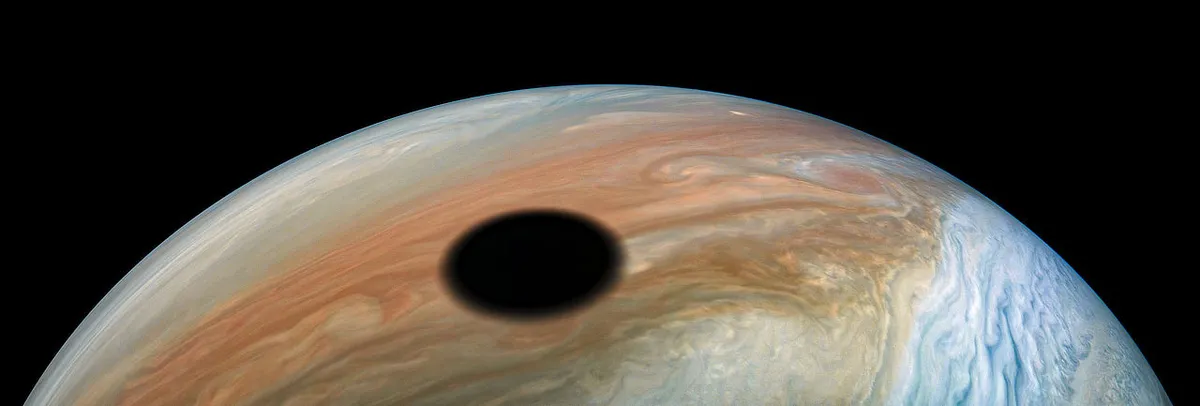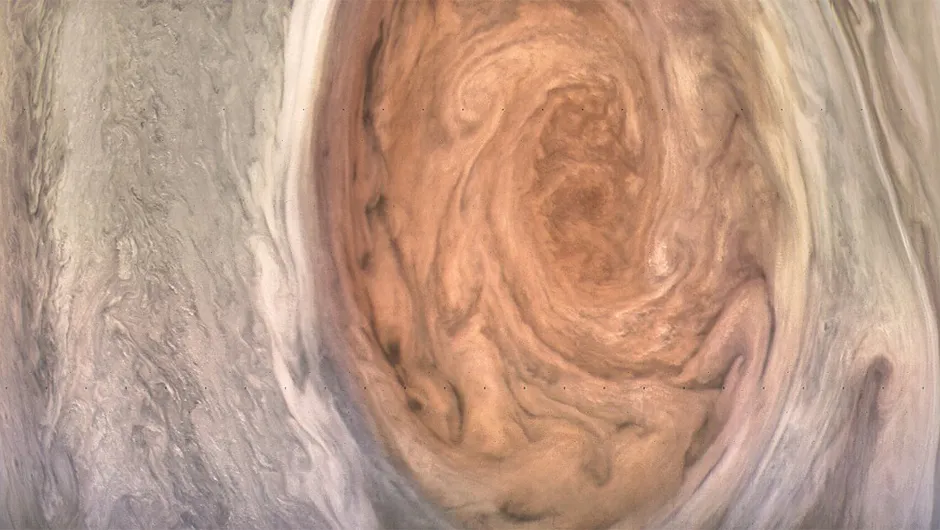On 4 July 2016 the Juno spacecraft arrived at Jupiter. It was the fastest human-made object in history (though it has now been overtaken by the Parker Solar Probe), and the first solar-powered spacecraft to operate so far from the Sun.
NASA's Juno spacecraft is on an exceptional mission, with four headline science goals to study the origin, interior, atmosphere and magnetosphere of Jupiter in unprecedented detail.
The ambitious scientific aims can only be realised through a daredevil orbit, which takes Juno over the poles of the planet, the first mission to do so.
At closest approach to Jupiter the spacecraft is a mere few-thousand kilometres from the cloud tops.But Jupiter is inhospitable and will not give up its secrets easily.

All of this orbital planning has to be conducted within the constraints of its harsh environment: the planet’s strong magnetic field traps charged particles into intense radiation belts, and in order to protect against this, Juno’s most sensitive electronics are housed in a titanium vault at the spacecraft’s heart.
Juno is executing a series of 53-day orbits, which are wrapping the planet in an orbital ‘web’ – ensuring full coverage of all latitudes and longitudes – so that its magnetic field and gravity can be fully mapped.
Some of Jupiter’s most iconic visual features are also linked to our biggest unknowns: what allows storms like the Great Red Spot to last for hundreds of years?
What are the constituents of the atmosphere that give the characteristic colours in the clouds?

In addition to Juno’s key science payload there is JunoCam, a citizen science instrument that provides visible colour images of the cloud tops.
These images show that the Great Red Spot is shrinking, and also reveal the complex structure of the polar regions, with multiple cyclonic storms, some 2,000km wide.
The dramatic swirls of cloud in Jupiter’s atmosphere have been shown to extend up to 3,000km deep and it is thought that some of the colour in the clouds may come from plumes of sulphur or phosphorus-containing gases rising from the warmer interior.
And as for Jupiter’s interior? We don’t know what’s inside Jupiter and Juno’s remote sensing instruments are helping us to answer the long-standing question of whether Jupiter has a solid core, and if so, how big it is.
This question can help to frame Jupiter’s place in the story of Solar System formation. Gravity measurements from Juno indicate that beneath the differentially rotating clouds, Jupiter rotates nearly as a rigid body, but the composition is as yet unknown.

Juno measurements continue to amaze scientists with their unpredictability. Its magnetometer has reported the first evidence of a time-varying planetary magnetic field beyond Earth.
Much of this variation is thought to be linked to an intense magnetic anomaly called the Great Blue Spot, near the equator.
It is possible that Jupiter’s strong atmospheric winds in this region distort the magnetic fields in dramatic ways.
Right now, Juno and its subsystems are all working well, sending back a wealth of complex data for scientists to pour over, as well as raw JunoCam images for the public to experiment with.
The mission, as planned, will orbit Jupiter until 2021 and we look forward to unlocking many of the giant planet’s mysteries.
Dr Caitriona Jackman is an associate professor of space physics at the University of Southampton. This article originally appeared in the January 2020 issue of BBC Sky at Night Magazine.